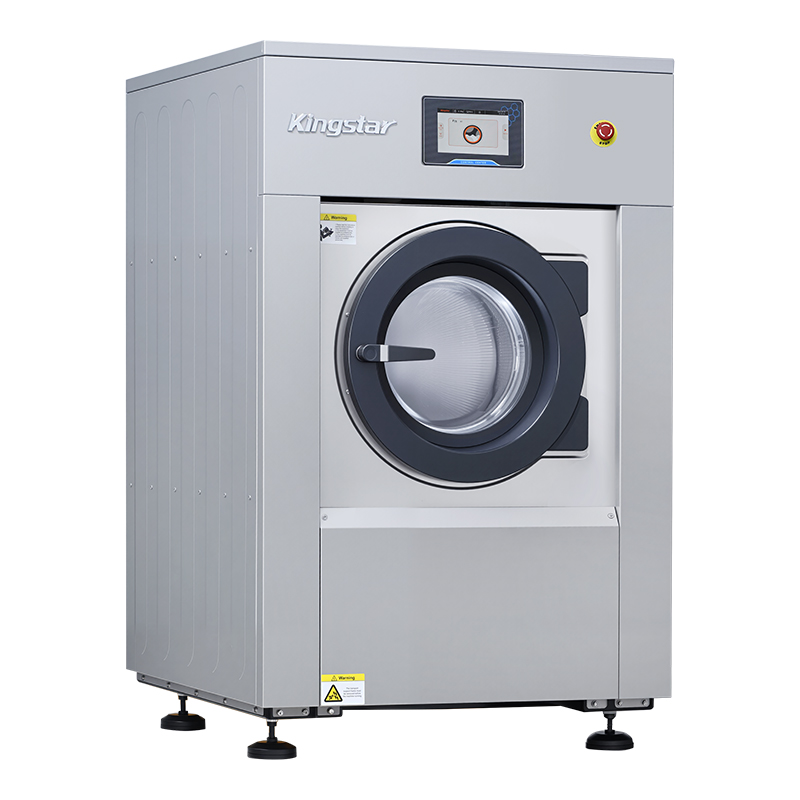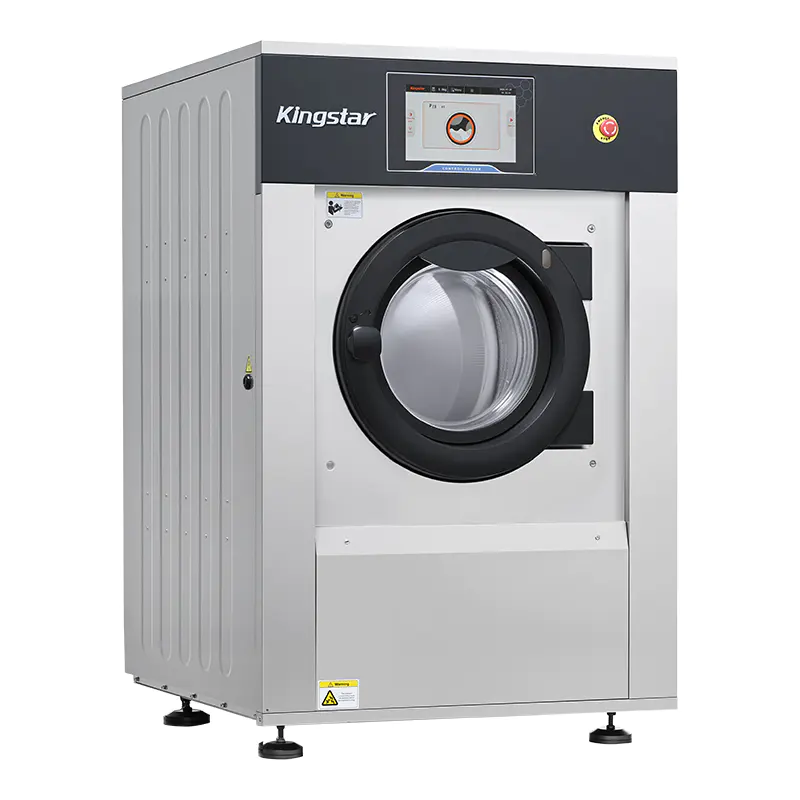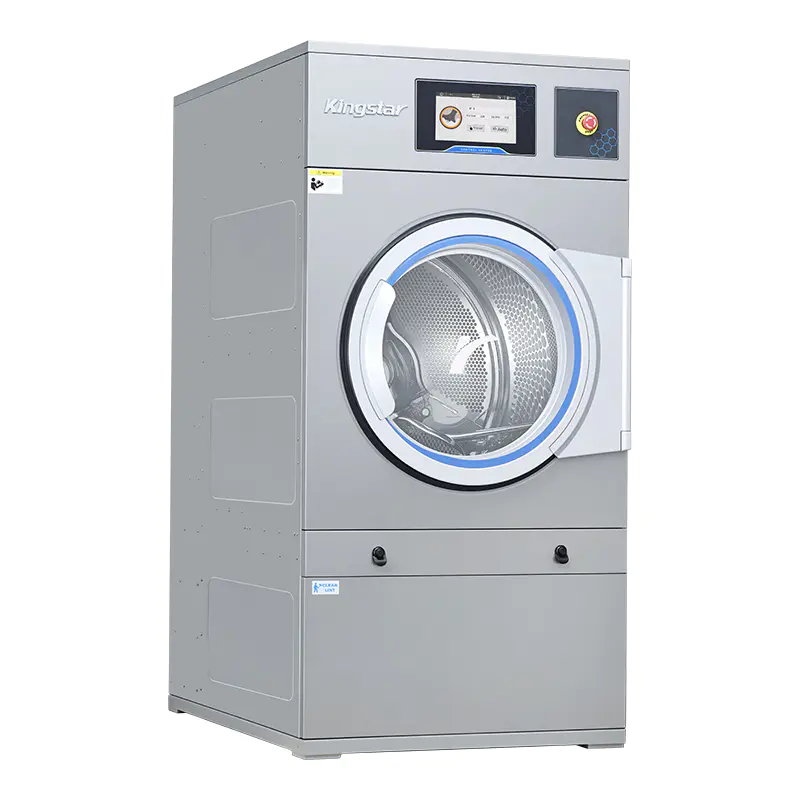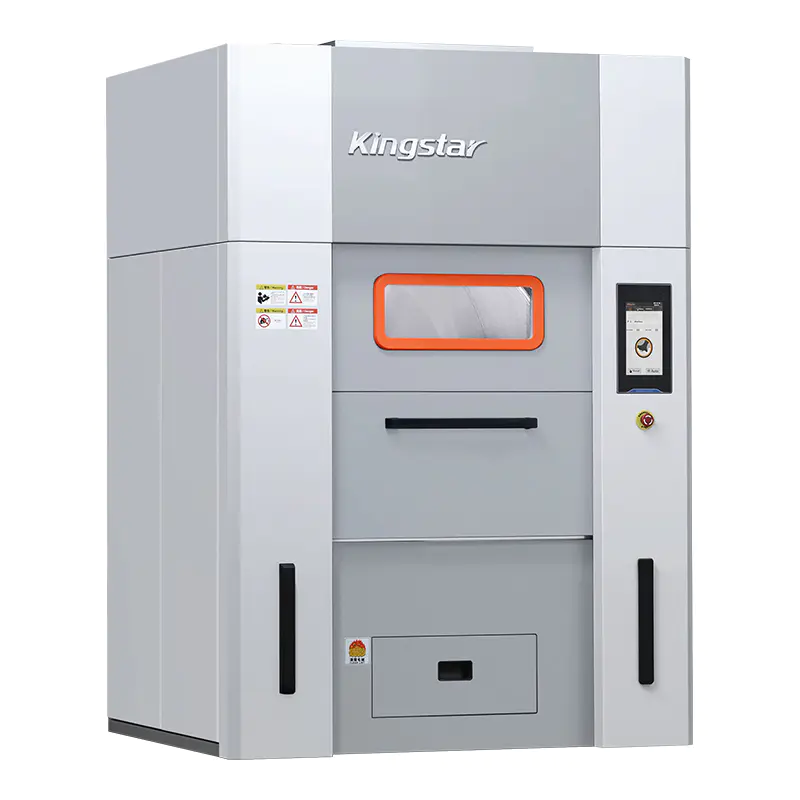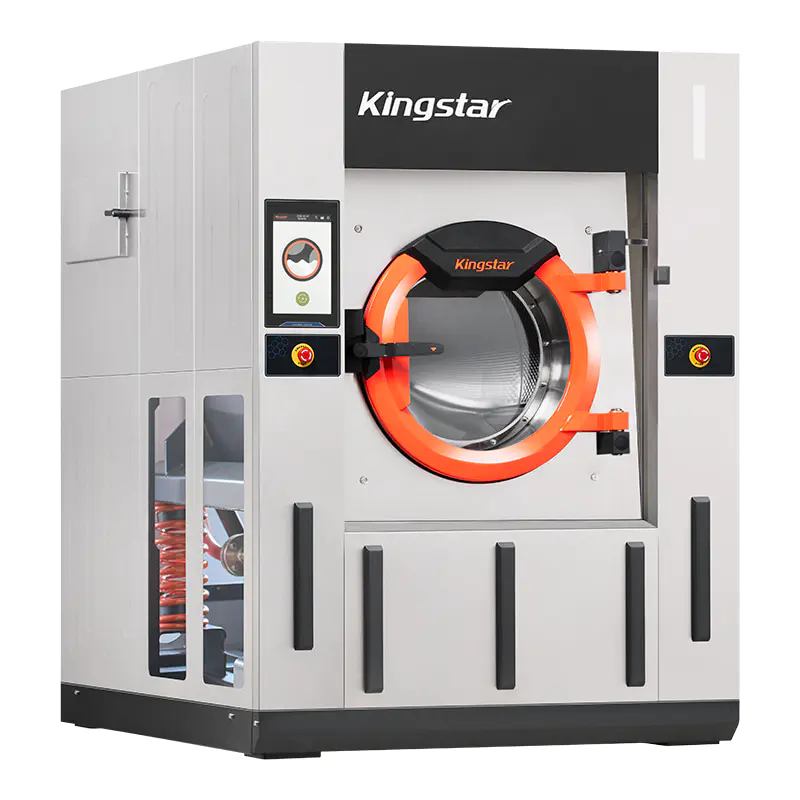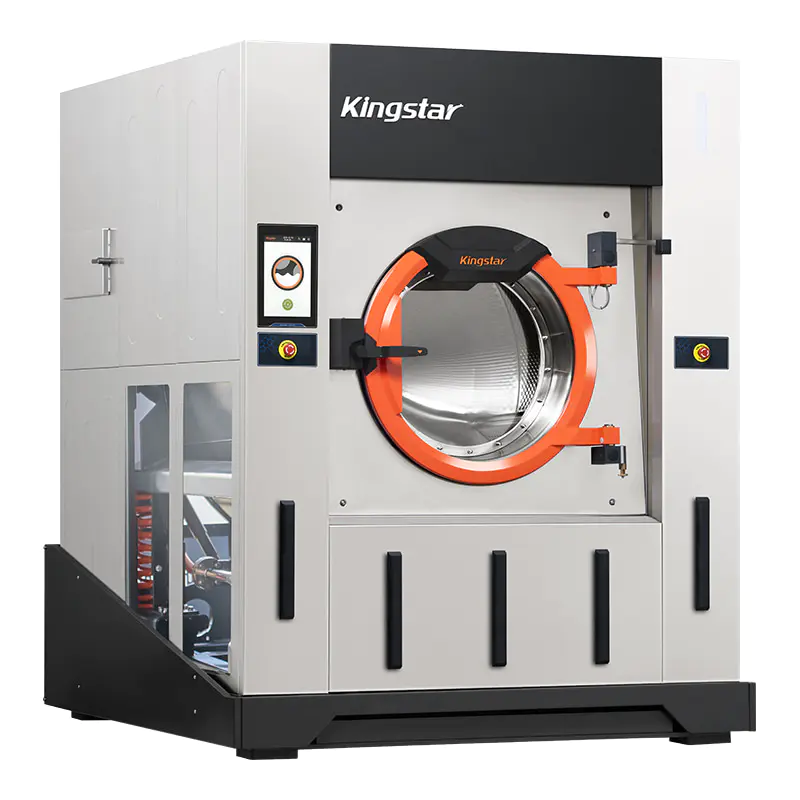
The Ultimate Guide to Coin-Operated Stacked Tumble Dryers: Cost, Benefits, and Models
Introduction to Coin-Operated Stacked Tumble Dryers
Overview of Coin-Operated Laundry Equipment
Coin-operated laundry equipment has become a standard solution in laundromats, multi-housing facilities, and commercial settings. These machines are designed to allow users to pay for each wash or dry cycle, providing a convenient and self-service option for residents and customers. The coin-operated model ensures controlled usage, which is particularly useful in shared laundry environments, as it reduces the need for manual supervision while maintaining an organized laundry operation. For property managers and laundromat owners, such equipment also facilitates predictable revenue streams and helps in managing operating costs effectively.
Space-Saving Benefits of Stacked Configuration
Stacked tumble dryers are a specific type of coin-operated laundry equipment that combines a washer and dryer or multiple dryers in a vertical arrangement. This configuration is particularly useful in locations where floor space is limited, such as apartment laundry rooms, small commercial laundries, or compact laundromat spaces. By stacking units, operators can maximize the number of machines available without expanding the footprint of the laundry area. This design not only increases operational capacity but also enhances workflow efficiency, allowing users to move quickly between machines during busy periods.
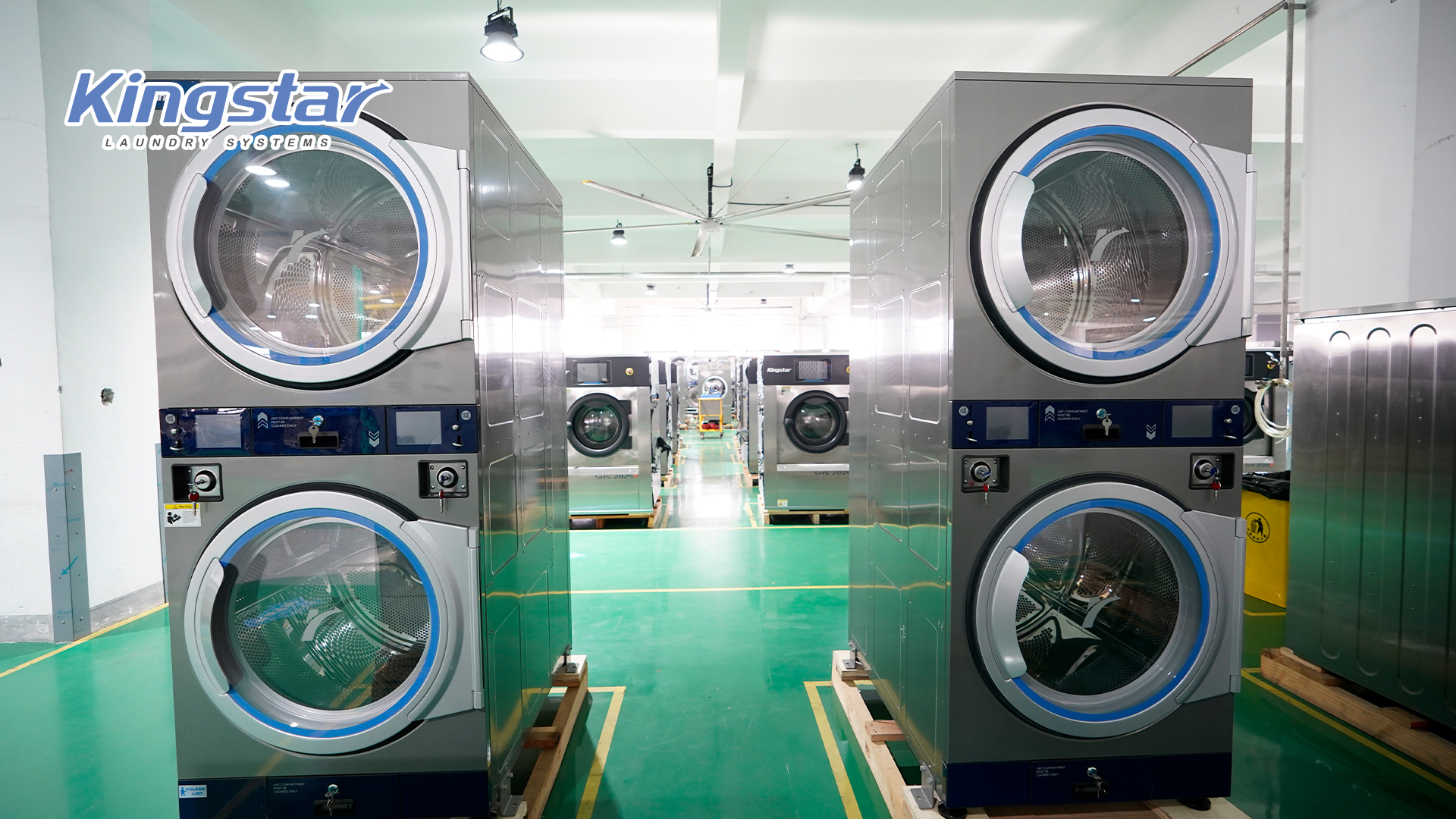
Efficiency and Reliability in Commercial Laundry
Coin-operated stacked tumble dryers are built with a focus on efficient drying cycles and consistent performance. These machines are equipped to handle frequent use in high-traffic environments while maintaining durability over time. Designed for commercial laundry settings, stacked dryers offer reliable performance that reduces the frequency of service interruptions and maintenance needs. Operators benefit from machines that can run multiple cycles per day without compromising drying quality, making them suitable for laundromats, residential complexes, and hotel laundry rooms.
|
Feature |
Benefit |
Target Setting |
|
Vertical stacking |
Saves floor space |
Apartment laundry rooms, compact laundromats |
|
Coin operation |
Controlled usage and revenue |
Multi-housing facilities, self-service laundries |
|
Durable construction |
Reduces maintenance frequency |
High-traffic commercial laundries |
|
Efficient drying |
Shorter cycle times |
Hotels, laundromats, residential complexes |
Adaptable Features for Diverse Laundry Needs
Modern coin-operated stacked tumble dryers often come with a variety of adaptable features designed to meet different laundry requirements. These may include adjustable cycle times, multiple drying temperature settings, and programmable coin mechanisms to accommodate varied user preferences. By incorporating such features, these machines can handle diverse fabric types and load sizes, ensuring that users achieve consistent results regardless of the laundry they process. Adaptable features also allow operators to tailor machine usage to the specific needs of their facility, enhancing customer satisfaction and operational flexibility.
Maintenance Considerations for Coin Laundry Equipment
While coin-operated stacked tumble dryers are designed for minimal upkeep, regular maintenance is still essential to ensure long-term reliability. Cleaning lint filters, checking electrical connections, and monitoring dryer drum performance are key practices that help maintain efficiency. Additionally, service schedules can be optimized by tracking machine usage, which allows operators to address potential issues before they affect operation. Proper maintenance routines not only extend the life of the stacked dryer but also improve the overall experience for end users by providing consistently functioning laundry equipment.
|
Maintenance Task |
Recommended Frequency |
Benefit |
|
Clean lint filters |
After every 5-10 cycles |
Ensures efficient airflow and drying |
|
Inspect electrical components |
Monthly |
Prevents unexpected downtime |
|
Check dryer drum rotation |
Quarterly |
Maintains uniform drying performance |
|
Monitor coin mechanism |
Monthly |
Reduces user frustration and ensures revenue integrity |
Target Audience and Practical Applications
Coin-operated stacked tumble dryers are particularly suited for laundromat owners, property managers, and operators of multi-housing facilities. In laundromats, these machines provide a compact solution that allows multiple users to operate simultaneously, optimizing service availability during peak hours. In residential complexes, stacked dryers offer residents a convenient, self-service laundry option while maximizing utility room space. Hotels and commercial facilities benefit from the durability and efficiency of these units, which support frequent, large-volume laundry loads without excessive oversight. By understanding the operational advantages of coin-operated stacked dryers, facility managers can make informed decisions about equipment investment and layout planning.
Integration with Washer-Dryer Combos
Some coin-operated stacked tumble dryers are part of washer-dryer combo setups, which further streamline laundry operations by combining washing and drying in a single unit. This integration reduces the need for multiple machines and allows users to complete laundry tasks in one continuous cycle. Washer-dryer combos are particularly effective in environments with space limitations, providing the convenience of stacked dryers while maintaining the functionality of a full commercial laundry setup. For operators, combining these units can simplify installation, reduce utility connections, and improve overall space utilization.
|
Unit Type |
Configuration |
Application |
|
Stacked dryer |
Vertical dryer units |
Small laundromats, apartment complexes |
|
Washer-dryer combo |
Single unit with both functions |
Hotels, compact laundry rooms |
|
Standalone washer and dryer |
Side-by-side or separate |
Larger laundromats, commercial laundry facilities |
|
Coin-operated system |
Pay-per-use functionality |
Multi-housing facilities, public laundries |
Benefits of Using Stacked Tumble Dryers
Space Optimization
Stacked tumble dryers offer a practical solution for maximizing floor space in commercial laundry environments. Unlike traditional side-by-side dryers, which require significant horizontal space, stacked dryers utilize vertical space to accommodate multiple units within a smaller footprint. This configuration is especially advantageous in laundromats, multi-housing laundry rooms, and compact commercial facilities where floor area is limited. By positioning dryers one on top of another, operators can provide more machines without increasing the overall size of the laundry room. This arrangement allows users to access multiple machines simultaneously, improving workflow efficiency and reducing waiting times during peak hours. In addition, stacked dryers can often be integrated with washer dryer combos, further optimizing space utilization while maintaining convenient access for users.
|
Dryer Type |
Floor Space Required |
Capacity Utilization |
|
Side-by-side dryer |
1.5 – 2 m² per unit |
Single unit per 2 m² |
|
Stacked tumble dryer |
0.8 – 1 m² per unit |
Two units per 1 m² |
|
Washer dryer combo |
1 – 1.2 m² per unit |
Single unit performing dual functions |
Cost-Effectiveness
Using coin-operated stacked tumble dryers can contribute to cost savings for laundry facility operators. Because stacked units occupy less space than traditional side-by-side machines, the initial installation costs are often lower. Facilities may require less construction or remodeling work to accommodate the same number of machines, reducing both labor and material expenses. Furthermore, maximizing the number of machines in a limited space can increase revenue potential, particularly in high-demand environments such as laundromats or multi-housing laundry rooms. By providing more accessible machines without expanding the physical space, operators can serve a larger number of users, thereby improving utilization rates and generating additional income over time.
Energy Efficiency
Energy efficiency is a key consideration when selecting commercial laundry equipment. Modern coin-operated stacked tumble dryers are designed to minimize energy consumption while maintaining effective drying performance. Features such as moisture sensors allow the dryer to detect the level of dampness in the load and adjust the drying cycle accordingly, preventing unnecessary energy use. Reversing drum technology ensures even drying by rotating the laundry in multiple directions, which reduces cycle time and improves overall efficiency. Selecting energy-efficient models not only reduces operational costs but also aligns with environmental sustainability goals, making these machines suitable for facilities aiming to minimize their energy footprint.
|
Feature |
Function |
Benefit |
|
Moisture sensor |
Detects dampness in clothing |
Avoids over-drying and saves energy |
|
Reversing drum |
Rotates laundry in alternating directions |
Ensures even drying and reduces cycle time |
|
Energy-efficient motor |
Low-power operation |
Reduces electricity usage over long-term operation |
Durability and Reliability
In commercial laundry environments, durability and reliability are crucial factors for equipment selection. Coin-operated stacked tumble dryers are designed for frequent, high-volume use, and selecting models with robust construction can reduce maintenance frequency and operational interruptions. Commercial-grade dryers often feature heavy-duty motors, reinforced drums, and corrosion-resistant components, ensuring consistent performance over time. Reliability is especially important in multi-housing laundry rooms and laundromats where downtime directly affects user satisfaction and revenue. By investing in durable stacked dryers, facility operators can maintain smooth daily operations, reduce service costs, and provide consistent laundry results for all users.
|
Component |
Recommended Feature |
Reason |
|
Motor |
Heavy-duty commercial grade |
Supports continuous, high-volume use |
|
Dryer drum |
Reinforced steel |
Withstands frequent operation without deformation |
|
Exterior casing |
Corrosion-resistant |
Maintains structural integrity in humid environments |
|
Coin mechanism |
Durable, tamper-resistant |
Ensures consistent revenue collection |
Adaptability for Various Laundry Settings
Stacked tumble dryers are suitable for a range of commercial laundry settings, including laundromats, hotels, residential complexes, and multi-housing laundry facilities. Their compact design and reliable operation allow facility managers to integrate multiple units in areas with limited space, while still providing a self-service experience for users. In laundromats, stacked dryers enable operators to offer more machines without requiring additional construction, while in multi-housing laundry rooms, residents benefit from efficient access to multiple dryers simultaneously. For hotels and commercial facilities, these machines provide the flexibility to manage frequent laundry cycles for large volumes of linens and clothing, ensuring consistent performance even under heavy use.
|
Setting |
Advantage of Stacked Dryer |
Benefit |
|
Laundromat |
More machines in limited space |
Shorter waiting times, higher throughput |
|
Residential complex |
Compact units for shared laundry rooms |
Efficient use of available space |
|
Hotel laundry |
Handles large volumes of linen |
Reduces laundry turnaround time |
|
Multi-housing laundry |
Easy integration with washer dryer combos |
Provides convenient self-service to residents |
Integration with Washer-Dryer Combos
In many commercial and residential applications, stacked tumble dryers can be paired with washer dryer combos to create fully integrated laundry solutions. This combination allows users to wash and dry clothes sequentially without transferring loads between separate machines, reducing handling time and improving user convenience. For operators, integrating stacked dryers with washer dryer combos optimizes the available space while maintaining high operational capacity. Additionally, the modular nature of these systems allows facility managers to tailor the laundry setup to specific needs, whether for a compact apartment building, a busy laundromat, or a hotel laundry room, ensuring efficient workflow and high user satisfaction.
|
Configuration |
Description |
Practical Benefit |
|
Standalone stacked dryer |
Single or double units stacked vertically |
Maximizes space utilization for drying only |
|
Washer dryer combo stack |
Dryer stacked above a washer dryer combo |
Combines washing and drying in limited footprint |
|
Mixed configuration |
Combination of standalone dryers and combos |
Flexible setup for varying laundry loads |
Key Features to Look for in a Coin-Operated Stacked Dryer
Capacity
The capacity of a coin-operated stacked tumble dryer is a critical consideration for laundromat owners, multi-housing laundry facilities, and commercial laundry operations. These dryers are available in various load capacities, commonly ranging from 30 lb to 45 lb. Smaller capacity models, such as 30 lb units, are suitable for light to moderate loads, including residential clothing or smaller commercial laundry batches. Larger capacity dryers, such as 45 lb models, are more appropriate for facilities handling bulk laundry or high-volume cycles, such as hotels, apartment complexes, or busy laundromats. Selecting the appropriate capacity ensures efficient drying, reduces cycle times, and optimizes energy usage. Additionally, understanding capacity needs helps operators design a balanced laundry room layout, allowing multiple machines to serve different load sizes effectively.
|
Capacity |
Suitable Load Type |
Recommended Setting |
|
30 lb |
Small residential or light commercial |
Multi-housing laundry, small laundromats |
|
40 lb |
Medium loads |
Mid-size laundromats, small hotels |
|
45 lb |
Large loads, bulk laundry |
High-volume laundromats, hotels, apartment complexes |
Coin Mechanism
The coin mechanism is a central component of coin-operated stacked dryers, and choosing the right type can impact both usability and revenue management. Modern dryers often feature electronic coin mechanisms that allow for programmable pricing, multiple coin types, and integration with card or app-based payment systems. Mechanical coin mechanisms, on the other hand, are simpler and tend to require less technical maintenance, offering reliable performance in basic applications. Operators should consider pricing flexibility, ease of operation, and potential maintenance requirements when selecting a coin mechanism. A well-chosen mechanism ensures smooth operation, minimizes downtime, and accommodates users efficiently, which is particularly important in high-traffic laundromats or multi-housing laundry facilities.
Energy Efficiency
Energy efficiency is an essential feature for modern coin-operated stacked tumble dryers. Energy-efficient models can reduce operational costs while maintaining effective drying performance. Many dryers carry Energy Star ratings or other certifications indicating compliance with efficiency standards. Features such as auto-dry, which stops the cycle when clothes reach the desired dryness level, and sensor technologies that monitor moisture and adjust the cycle accordingly, help conserve energy. Reversing drum technology and advanced air circulation systems also contribute to even drying and shorter cycle times. Facilities that prioritize energy efficiency benefit from lower utility costs and a reduced environmental footprint, making these dryers suitable for commercial laundries, laundromats, and multi-housing facilities.
|
Feature |
Function |
Benefit |
|
Auto-dry |
Stops when clothes are dry |
Prevents over-drying, saves energy |
|
Moisture sensors |
Detect moisture levels in load |
Adjusts cycle, reduces energy consumption |
|
Reversing drum |
Rotates laundry alternately |
Ensures even drying, shortens cycle time |
|
Energy Star certification |
Meets efficiency standards |
Reduces electricity usage over time |
Construction and Durability
The construction and durability of a coin-operated stacked tumble dryer are key factors affecting long-term reliability and maintenance needs. High-quality dryers typically feature stainless steel drums, which resist corrosion and provide even heat distribution, as well as sturdy cabinet materials that can withstand frequent use. Operators should also evaluate warranty and service options, as these can provide support for repairs or component replacement, minimizing operational downtime. Robust construction ensures consistent performance, reduces maintenance frequency, and supports heavy usage in laundromats, commercial laundry rooms, and multi-housing laundry facilities. Selecting durable materials and reliable service arrangements is essential for facilities that rely on uninterrupted laundry operations.
|
Component |
Recommended Material |
Benefit |
|
Dryer drum |
Stainless steel |
Corrosion resistance, even drying |
|
Cabinet |
Heavy-duty metal |
Withstands frequent commercial use |
|
Exterior finish |
Powder-coated or coated metal |
Protects against wear and moisture |
|
Warranty/service |
Manufacturer-supported |
Reduces downtime and repair costs |
User-Friendliness
User-friendliness is another important consideration for coin-operated stacked dryers. Clear controls, intuitive interfaces, and straightforward instructions help ensure that users of all experience levels can operate the machine efficiently. Accessibility features, such as controls positioned for easy reach and simple visual indicators, are particularly valuable in multi-housing laundry rooms where residents of different abilities need convenient access. Additionally, simple maintenance procedures for cleaning lint filters and loading the drum can reduce operational disruptions and improve user satisfaction. Ensuring that dryers are easy to operate contributes to a positive laundry experience while supporting consistent usage in high-traffic environments.
|
Feature |
Description |
Benefit |
|
Control panel |
Clear buttons and digital display |
Easy operation for all users |
|
Instructions |
Visible, simple instructions |
Reduces confusion and misuse |
|
Accessibility |
Controls at reachable height |
Supports users with disabilities |
|
Maintenance access |
Removable lint filter and accessible drum |
Simplifies routine upkeep |
Adaptability for Different Laundry Settings
Coin-operated stacked tumble dryers are designed to be versatile and suitable for various laundry environments. In laundromats, these machines can handle continuous high-volume usage, providing efficient drying cycles for a large number of customers. In multi-housing laundry rooms, stacked dryers maximize space utilization while serving multiple residents simultaneously. Commercial laundry facilities benefit from machines that offer a balance of capacity, energy efficiency, and durability to manage frequent, large-volume loads. Additionally, combining stacked dryers with washer dryer combos can optimize workflow by allowing sequential washing and drying in a limited footprint. The adaptability of these machines ensures that operators can meet diverse operational requirements while maintaining convenient access and reliable performance for users.
|
Setting |
Advantage |
Example |
|
Laundromat |
Handles high traffic |
Continuous cycles, multiple users |
|
Multi-housing laundry |
Space-efficient |
Serves several residents simultaneously |
|
Commercial laundry |
Large-volume capacity |
Hotels, apartment complexes |
|
Washer dryer combo integration |
Sequential wash and dry |
Compact and convenient layout |
Installation and Maintenance of Coin-Operated Stacked Tumble Dryer
Installation Requirements
Installing a coin-operated stacked tumble dryer requires careful attention to electrical and venting specifications to ensure safe and efficient operation. Most commercial-grade stacked dryers operate on a dedicated 240-volt electrical circuit with sufficient amperage to handle continuous high-volume use. Adequate circuit protection and properly grounded outlets are essential to prevent electrical hazards. Venting is another critical factor; proper ducting is required to remove moisture and lint effectively. Vent materials should meet local building codes and allow for smooth airflow to prevent condensation and reduce the risk of fire. Professional installation is highly recommended, as trained technicians can ensure that electrical connections, venting, and overall placement comply with safety standards while optimizing performance. Correct installation also helps prevent premature wear and operational issues, allowing the coin-operated stacked tumble dryer to function reliably in laundromats, multi-housing laundry rooms, and commercial laundry facilities.
Routine Maintenance
Routine maintenance is essential for keeping coin-operated stacked tumble dryers functioning efficiently and extending their service life. One of the most important maintenance tasks is cleaning the lint filter after every cycle to prevent lint buildup, which can restrict airflow and reduce drying efficiency. Regular inspection and cleaning of the dryer drum, vents, and exterior surfaces help maintain optimal performance. Lubricating moving parts, such as the drum bearings, according to manufacturer recommendations can prevent mechanical wear. Establishing a consistent maintenance schedule ensures that potential issues are addressed before they affect operation, reducing downtime for laundromats, multi-housing laundry rooms, or commercial laundry facilities. Consistent maintenance not only prolongs equipment lifespan but also improves safety and user experience.
|
Maintenance Task |
Frequency |
Purpose |
|
Lint filter cleaning |
After every cycle |
Maintains airflow and drying efficiency |
|
Drum and vent inspection |
Monthly |
Prevents blockages and condensation buildup |
|
Exterior cleaning |
Monthly |
Keeps equipment sanitary and visually appealing |
|
Lubrication of moving parts |
Quarterly or as recommended |
Reduces wear and prolongs mechanical life |
Troubleshooting Common Issues
Even with proper installation and routine maintenance, coin-operated stacked tumble dryers may encounter occasional problems. Common issues include the dryer failing to start, uneven drying, or unusual noises during operation. A dryer that fails to start may be due to a tripped breaker, a blown fuse, or an incorrectly installed coin mechanism. Uneven drying can result from blocked vents, overloaded loads, or worn drum belts. Unusual noises may indicate loose components or worn bearings. Operators should first consult the user manual for basic troubleshooting steps and address minor issues such as cleaning filters or checking load distribution. For more complex problems, professional repair services should be contacted to prevent further damage and ensure safety. Knowing when to seek professional help is crucial for maintaining the performance and reliability of coin-operated stacked tumble dryers in high-use environments.
|
Common Issue |
Possible Cause |
Solution |
|
Dryer fails to start |
Tripped breaker, blown fuse, coin mechanism error |
Reset breaker, replace fuse, check coin mechanism |
|
Uneven drying |
Blocked vents, overloaded drum, worn belt |
Clean vents, redistribute load, inspect belt |
|
Unusual noises |
Loose parts, worn bearings |
Tighten components, replace bearings as needed |
|
Cycle interruption |
Power fluctuations, sensor issues |
Verify power supply, consult technician |
Best Practices for Installation and Maintenance
Following best practices during installation and maintenance of coin-operated stacked tumble dryers ensures safe operation and reliable performance. Operators should verify that the installation site meets space, electrical, and venting requirements, allowing sufficient clearance around the machine for airflow and maintenance access. Regularly scheduled inspections and preventive maintenance help identify potential issues early, including worn components, airflow restrictions, or electrical concerns. Keeping a maintenance log can assist in tracking service history and planning future servicing. Combining these practices with professional installation and timely repairs supports the continued operation of laundromats, multi-housing laundry rooms, and commercial laundry facilities while minimizing disruptions to users.
|
Practice |
Recommendation |
Benefit |
|
Installation clearance |
Follow manufacturer guidelines |
Ensures proper airflow and maintenance access |
|
Preventive maintenance |
Conduct monthly and quarterly inspections |
Identifies potential issues early |
|
Maintenance records |
Maintain log of servicing |
Tracks equipment history and supports scheduling |
|
Professional support |
Hire certified technicians for complex issues |
Ensures safety and proper repairs |
Integration with Other Laundry Equipment
In facilities that use multiple types of coin-operated laundry equipment, integrating stacked tumble dryers with washer dryer combos or standalone washers can improve workflow and efficiency. Proper installation of stacked dryers near washer units allows for easy transfer of loads, reducing handling time for users. Coordinating maintenance schedules for all machines in the laundry area ensures consistent performance and minimizes operational downtime. Additionally, using compatible venting and electrical systems for multiple machines can simplify installation and reduce costs. Integrating coin-operated stacked tumble dryers effectively into a broader laundry setup ensures that laundromats, multi-housing laundry rooms, and commercial laundry facilities operate smoothly while providing a convenient experience for users.
|
Integration Aspect |
Recommendation |
Benefit |
|
Proximity to washers |
Install near washer units |
Reduces transfer time and effort |
|
Coordinated maintenance |
Schedule inspections for all equipment |
Ensures consistent operation |
|
Shared venting/electrical systems |
Use compatible layouts |
Simplifies installation, reduces costs |
|
Workflow optimization |
Plan machine placement |
Improves user convenience and efficiency |
Future Trends in Coin-Operated Laundry
Technological Advancements in Laundry Equipment
The coin-operated laundry industry has been evolving through continuous technological advancements, impacting both laundromats and multi-housing laundry facilities. Modern coin-operated stacked tumble dryers and other commercial laundry equipment now incorporate features designed to improve efficiency, reduce operational costs, and enhance user experience. These advancements include moisture sensors, auto-dry functions, and reversing drum technology that ensure even drying while conserving energy. Additionally, smart connectivity options allow operators to monitor machine usage, track maintenance needs, and manage operations remotely. Integration with washer dryer combos also offers space-efficient solutions, providing a streamlined workflow for residential and commercial laundry settings. These technological developments enable operators to deliver more consistent drying results, improve machine utilization, and respond quickly to potential service needs, making them a practical investment for high-traffic laundromats and commercial laundry facilities.
|
Technology Feature |
Description |
Benefit |
|
Moisture sensors |
Detect clothing moisture levels |
Prevent over-drying, conserve energy |
|
Auto-dry |
Stops the cycle when clothes are dry |
Reduces energy usage and cycle times |
|
Reversing drum |
Rotates laundry in alternating directions |
Ensures even drying and reduces wrinkles |
|
Smart connectivity |
Remote monitoring and alerts |
Improves maintenance planning and uptime |
|
Washer dryer combo integration |
Combined wash and dry functionality |
Saves space and simplifies workflow |
The Rise of Cashless Payment Systems
Cashless payment systems are becoming increasingly common in coin-operated laundry environments, including laundromats and multi-housing laundry rooms. While traditional coin laundry machines still operate effectively, many facilities are adopting electronic payment options such as mobile apps, contactless cards, or prepaid laundry cards. Cashless systems offer greater convenience for users, allowing them to manage payments without carrying coins and providing flexible pricing options for operators. These systems also enable remote monitoring of machine usage, simplify revenue tracking, and reduce the operational challenges associated with coin collection and maintenance of coin mechanisms. For commercial laundry and multi-housing laundry operators, the adoption of cashless payment solutions represents a step towards modernized, efficient, and user-friendly laundry services.
|
Payment Method |
Features |
Advantages |
|
Coins |
Traditional coin mechanism |
Simple, widely understood by users |
|
Prepaid cards |
Reloadable cards for multiple users |
Reduces cash handling, simplifies accounting |
|
Mobile apps |
Payment via smartphone |
Provides convenience and remote control |
|
Contactless cards |
Tap-to-pay functionality |
Streamlines transactions and reduces downtime |
Environmental Regulations and Sustainability
Environmental considerations are becoming more significant in the coin-operated laundry sector. Commercial laundry equipment, including stacked dryers and washer dryer combos, is increasingly designed to meet energy efficiency standards and water conservation requirements. Compliance with environmental regulations often includes features such as Energy Star certification, low-temperature drying cycles, and efficient airflow systems. Implementing sustainable practices reduces utility costs and supports regulatory compliance, while also appealing to environmentally conscious customers. Many operators now prioritize eco-friendly equipment when upgrading or expanding laundromats and multi-housing laundry facilities, reflecting a growing trend towards sustainability in the industry. Investing in energy-efficient, environmentally compliant coin-operated stacked tumble dryers provides long-term operational benefits and aligns with broader environmental goals.
Integration with Smart Facilities
The future of coin-operated laundry includes increased integration with smart facility management systems. Laundry machines equipped with sensors and connectivity features allow operators to monitor multiple units in real time, track usage patterns, and schedule maintenance proactively. In multi-housing laundry rooms, this integration provides residents with information about machine availability, estimated cycle completion times, and operational status. For commercial laundry operators, data collected from connected machines can inform equipment upgrades, optimize energy usage, and reduce downtime. The combination of smart technology and modern coin-operated stacked tumble dryers ensures efficient, responsive, and convenient laundry operations that align with the evolving expectations of users in residential and commercial settings.
Space Efficiency and Modular Design
Stacked dryers and washer dryer combos are central to space-efficient laundry layouts, particularly in urban multi-housing and commercial laundry settings. Modular designs allow operators to add or remove units based on demand without extensive remodeling. Future trends emphasize flexible layouts that can accommodate evolving space requirements while maintaining accessibility for users. Space efficiency not only supports higher machine density but also improves workflow for users transferring loads between washers and dryers. Combining modular, stackable dryers with other laundromat equipment ensures that facilities can meet demand, optimize energy use, and provide a convenient experience for customers.
|
Design Aspect |
Description |
Benefit |
|
Stackable units |
Vertically arranged dryers |
Maximizes floor space usage |
|
Modular layout |
Add or remove units as needed |
Flexible response to demand changes |
|
Washer dryer combos |
Combined functionality in one unit |
Reduces footprint and simplifies laundry flow |
|
Accessibility |
Controls and doors positioned for ease of use |
Supports a diverse user base |
Future Opportunities for Operators
Operators of laundromats, multi-housing laundry facilities, and commercial laundry services can benefit from adopting emerging trends in coin-operated laundry. By embracing technological advancements, integrating cashless payment systems, and prioritizing energy-efficient and environmentally compliant equipment, operators can optimize operations, reduce costs, and enhance user satisfaction. Coin-operated stacked tumble dryers and related laundry equipment are increasingly designed with adaptability, connectivity, and sustainability in mind, positioning facilities to meet evolving market expectations. Planning for these trends allows operators to maintain competitiveness and provide a modern, efficient laundry experience that addresses both operational and environmental considerations.
ADD:No.388 Xinggang Road, Chongchuan District, Nantong City, 226000, Jiangsu Province, China.
-
Phone: +86-13917089379
-
Tel:+86-13917089379
-
Fax:+86-0513-85663366
-
E-mail:[email protected]
